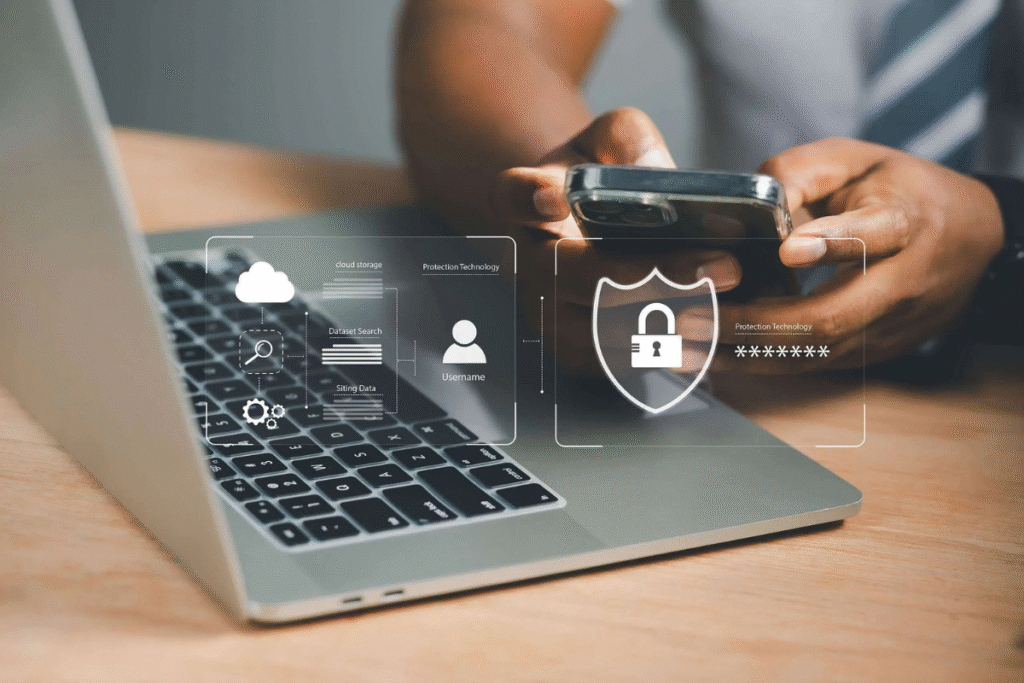In today’s digital age, the internet has become an indispensable part of our daily lives. From online shopping and banking to social media and remote work, we rely on digital platforms for convenience and efficiency. The internet connects us to information, services, and people across the globe in seconds. However, alongside these benefits lies a dark reality: the increasing threat of digital theft and identity fraud. As more personal and financial data circulates online, cybercriminals are always on the lookout for ways to exploit vulnerabilities.
Digital theft is not just about hacking accounts. It can involve stealing social security numbers, credit card details, login credentials, or even personal data like your address and birthdate. Once this information falls into the wrong hands, it can lead to devastating consequences such as financial loss, damaged reputation, and emotional stress. Thankfully, there are proactive steps you can take to secure your online identity and minimize risks.
In this guide, we’ll explore effective strategies to protect your identity from digital theft, drawing insights from online security rules recommended by e-Investigations International.
Understanding Identity Theft in the Digital Era
Identity theft occurs when someone wrongfully acquires and uses your personal data for fraudulent purposes, often without your knowledge. Unlike traditional theft where you notice the missing wallet, digital theft is silent and invisible. By the time victims realize it, significant damage may already be done.
Common forms of digital identity theft include:
- Financial fraud: Unauthorized transactions using stolen bank or credit card information.
- Phishing scams: Fake emails or websites designed to trick you into providing sensitive data.
- Account takeover: Criminals gain access to your email, social media, or online accounts.
- Medical identity theft: Using stolen data to obtain healthcare services or prescriptions.
- Tax-related fraud: Filing fraudulent tax returns using stolen personal details.
With this understanding, let’s move on to practical steps you can take to safeguard yourself.
1. Create Strong and Unique Passwords
Passwords are the first line of defense in the digital world. Weak or reused passwords make it easy for cybercriminals to access multiple accounts once a single password is compromised.
Tips for Strong Passwords:
- Use a combination of uppercase, lowercase, numbers, and special characters.
- Avoid using obvious details like your name, birthdate, or “123456.”
- Create unique passwords for each account instead of reusing the same one.
- Consider using a password manager to store and generate complex passwords securely.
- Enable two-factor authentication (2FA) wherever possible for an extra layer of protection.
2. Protect Your Financial Information
Your financial data is one of the most attractive targets for cybercriminals. Whether you shop online or manage digital banking, extra caution is needed.
Best Practices:
- Use only trusted banking and shopping platforms with SSL encryption (look for “https://” in the URL).
- Regularly monitor your bank and credit card statements for unusual activity.
- Set up transaction alerts on your accounts to receive immediate notifications of suspicious activity.
- Avoid using public Wi-Fi for financial transactions; instead, use a secure, private network.
- Store minimal card details online and use virtual or disposable cards when available.
3. Be Cautious About Sharing Information with Third Parties
Many identity theft cases begin when people unknowingly hand over their data to malicious third parties.
What You Should Do:
- Be wary of websites or emails requesting personal details, especially if they promise rewards.
- Research companies before providing information—legitimate businesses will never pressure you into revealing sensitive data.
- Avoid sharing too much personal information on social media, which scammers can use for impersonation or security question guessing.
- Never click on suspicious links or download attachments from unknown sources.
4. Use Reliable Security Software
Your devices are the gateways to your digital life. Without adequate protection, they are vulnerable to malware, ransomware, and spyware designed to steal information.
Security Measures:
- Install reputable antivirus and anti-malware software and keep it updated.
- Enable firewalls to block unauthorized access.
- Regularly update your operating system and apps to patch security vulnerabilities.
- Avoid downloading pirated or cracked software, which often contains malware.
5. Secure Your Digital Devices
Every device connected to the internet is a potential entry point for criminals.
Tips for Device Security:
- Lock your devices with a PIN, fingerprint, or face recognition.
- Use encrypted storage or secure cloud services for sensitive files.
- Regularly back up important data to minimize loss in case of attacks.
- Enable remote wipe features to erase data if your device gets stolen.
6. Stay Alert Against Phishing Attacks
Phishing remains one of the most common cybercrimes. Scammers disguise themselves as trustworthy entities to trick users into handing over data.
How to Spot Phishing Attempts:
- Check for grammar errors, unusual URLs, and suspicious email addresses.
- Avoid clicking on embedded links in unsolicited emails.
- Verify the sender before responding to emails requesting sensitive information.
- Remember: Banks and legitimate companies rarely ask for confidential information over email.
7. Monitor Your Digital Footprint
Your digital footprint is the trail of data you leave behind when using the internet. The more data available, the easier it is for criminals to piece together your identity.
Steps to Reduce Risks:
- Use privacy settings on social media to limit what others can see.
- Delete unused accounts that may still hold your information.
- Regularly Google yourself to check what information is publicly accessible.
- Opt-out of unnecessary data collection wherever possible.
8. Use Multi-Factor Authentication (MFA)
Even if your password is stolen, MFA adds another layer of defense by requiring additional verification methods such as:
- A code sent to your phone or email.
- Authentication apps like Google Authenticator or Authy.
- Biometric verification like fingerprints or facial recognition.
Implement MFA on sensitive accounts such as banking, email, and work-related logins.
9. Be Careful with Public Wi-Fi
Public Wi-Fi is convenient but notoriously unsafe. Hackers can intercept unencrypted data transmitted over open networks.
Safe Practices:
- Avoid accessing financial or sensitive accounts on public Wi-Fi.
- Use a Virtual Private Network (VPN) to encrypt your internet connection.
- Turn off file sharing and make sure your device isn’t set to automatically connect to open networks.
10. Educate Yourself and Stay Updated
Cybersecurity is an ever-evolving field. Criminals are always developing new tactics, so staying informed is crucial.
Stay Proactive:
- Follow trusted cybersecurity blogs and news outlets.
- Take online security awareness training, especially if your work involves sensitive information.
- Teach family members about online safety, especially children and seniors, who are often targeted.
Conclusion
Protecting your identity in the digital age requires awareness, vigilance, and consistent application of online security practices. While technology continues to evolve, so do the tactics of cybercriminals. However, by creating strong passwords, safeguarding financial information, avoiding suspicious third parties, securing devices, and staying informed, you can significantly reduce the risk of identity theft.
Your online safety is in your hands. Think of your digital identity as your most valuable asset—guard it with the same seriousness you would your home or physical possessions. By taking these steps, you not only protect yourself but also contribute to a safer and more trustworthy digital community.
FAQs
What is the most common form of identity theft?
The most common type is financial fraud, where criminals steal credit card or bank details to make unauthorized purchases or withdrawals.
How can I tell if my identity has been stolen?
Signs include unexplained charges, unfamiliar accounts appearing on your credit report, or receiving bills for services you didn’t use.
Is it safe to store my credit card details online?
It’s safer to avoid storing card details permanently. If necessary, only save them on trusted and secure platforms, and use virtual cards if available.
Can antivirus software alone protect me from identity theft?
No, antivirus software is just one layer of protection. You should combine it with strong passwords, MFA, safe browsing habits, and awareness.
Should I use public Wi-Fi for online banking?
It’s not recommended. If you must, always use a VPN to encrypt your connection.
What should I do immediately if I suspect identity theft?
Contact your bank or credit card provider, change your passwords, report the incident to relevant authorities, and monitor your credit report closely.

